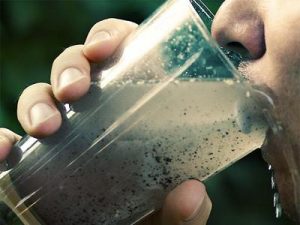An outbreak of Legionnaires’ disease that killed 12 people and sickened at least 87 in Flint, Mich., in 2014 and 2015 was caused by low chlorine levels in the municipal water system, scientists have confirmed. It’s the most detailed evidence yet linking the bacterial disease to the city’s broader water crisis.
 Rebecca Hersher of NPR reports that in April 2014, Flint’s water source switched from Lake Huron to the Flint River. Almost immediately, residents noticed tap water was discolored and acrid-smelling. By 2015, scientists uncovered that the water was contaminated with lead and other heavy metals.
Rebecca Hersher of NPR reports that in April 2014, Flint’s water source switched from Lake Huron to the Flint River. Almost immediately, residents noticed tap water was discolored and acrid-smelling. By 2015, scientists uncovered that the water was contaminated with lead and other heavy metals.
Just months after the water source changed, hospitals were reporting large numbers of people with Legionnaires’ disease.
“It’s a pneumonia, but what’s different about it is, we don’t share it like we do the flu or common cold,” explains Michele Swanson of the University of Michigan, who has been studying Legionnaires’ for 25 years. “It’s caused by a bacterium,Legionella pneumophila, that grows in water.”
The bug can enter the lungs through tiny droplets, like ones dispersed by an outdoor fountain or sprinkler system, or accidentally inhaled if a person chokes while drinking.
“If you don’t have a robust immune system, the microbe can cause a lethal pneumonia,” she says. In a normal year, the disease is relatively rare — about six to 12 cases per year in the Flint area, according to Swanson. During the water crisis, that jumped up to about 45 cases per year.
Although the outbreak of Legionnaires’ happened at the same time as the Flint water crisis, it was initially unclear how the two were connected. After earlier research suggested that chlorine levels might be the key, Swanson and colleagues at the University of Michigan in Ann Arbor, Sammy Zahran of Colorado State University and a team of researchers at Wayne State University in Detroit, began analyzing detailed water and epidemiological data from the six-year period before, during and after the crisis.
“We know that Legionella is sensitive to chlorine in the laboratory,” says Swanson. The chlorine makes it difficult for the bacteria to replicate, which is one reason water companies often add chlorine to their systems. But when Flint’s water source changed, the chlorine level dropped and cases of Legionnaires’ disease spiked. “It was the change in water source that caused this Legionnaires’ outbreak,” Swanson says.
The new research was published in a pair of studies in the Proceedings of the National Academy of Sciences and the journal mBio on Monday. The conclusion may bolster parts of the case being brought against Nick Lyon, the former Michigan Department of Health and Human Services director, who is being tried for involuntary manslaughter in connection with the Legionnaires’ deaths.
From April 2014 to October 2015, the Flint River served as Flint’s water source. During the same period, cases of Legionnaires’ disease increased from less than a dozen per year to about 45 per year, and 12 people died of the waterborne disease.
The new studies also suggest that a complex set of factors may be responsible for low chlorine levels during the crisis. In addition to killing microbes, chlorine can react with heavy metals like lead and iron, and with organic matter from a river. That means lead and iron in the water may have decreased the amount of chlorine available to kill bacteria.
 It’s believed more than 100 people have fallen ill with vomiting and diarrhea symptoms since eating the oysters.
It’s believed more than 100 people have fallen ill with vomiting and diarrhea symptoms since eating the oysters.







